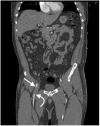Multi-Detector Computed Tomography Imaging Techniques in Arterial Injuries
- PMID: 29695034
- PMCID: PMC5977127
- DOI: 10.3390/jcm7050088
Multi-Detector Computed Tomography Imaging Techniques in Arterial Injuries
Abstract
Cross-sectional imaging has become a critical aspect in the evaluation of arterial injuries. In particular, angiography using computed tomography (CT) is the imaging of choice. A variety of techniques and options are available when evaluating for arterial injuries. Techniques involve contrast bolus, various phases of contrast enhancement, multiplanar reconstruction, volume rendering, and maximum intensity projection. After the images are rendered, a variety of features may be seen that diagnose the injury. This article provides a general overview of the techniques, important findings, and pitfalls in cross sectional imaging of arterial imaging, particularly in relation to computed tomography. In addition, the future directions of computed tomography, including a few techniques in the process of development, is also discussed.
Keywords: CT; angiography; arterial injury; computed tomography; cross-sectional; imaging; radiology.
Conflict of interest statement
The authors declare no conflict of interest.
Figures











References
Publication types
Grants and funding
LinkOut - more resources
Full Text Sources
Other Literature Sources

